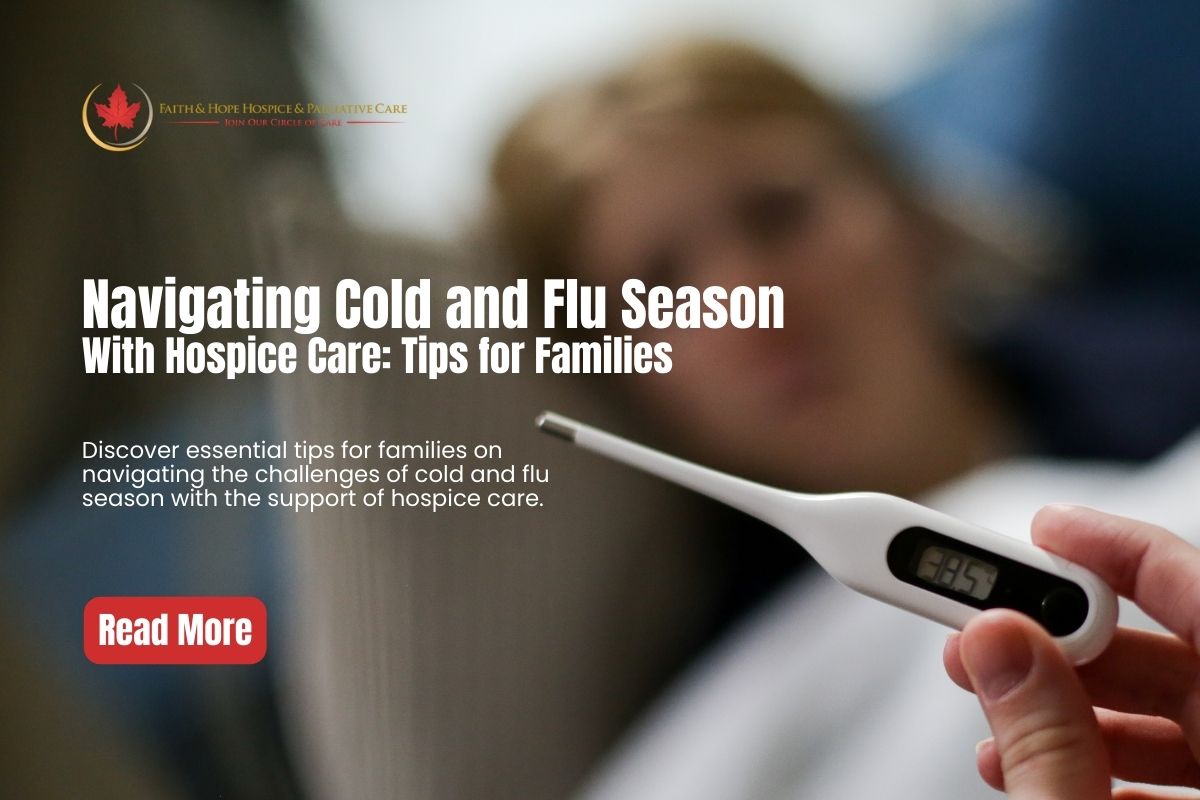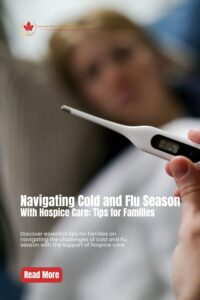
- By: administrator
- Blog
- No Comments
As the leaves begin to change and temperatures drop, the arrival of cold and flu season becomes inevitable. For families already dealing with the complexities of hospice care, the added concern of illness during this time can be overwhelming. However, with proper understanding, precautions, and access to resources like hospice care, families can navigate the challenges of cold and flu season while ensuring their loved ones receive the best possible care. In this comprehensive guide, we will discuss the nuances of hospice eligibility in Los Angeles, the valuable benefits hospice care offers in Los Angeles, and the importance of quality hospice care in Pasadena. Along the way, we will emphasize the exceptional support and care provided by Faith and Hope Hospice, a true pillar of strength in these difficult times.

Understanding Hospice Eligibility in Los Angeles
Hospice care is a specialized form of healthcare designed to provide comfort and support to individuals with life-limiting illnesses and their families. Understanding hospice eligibility is the first step in accessing this essential service. Hospice care becomes an option when an individual has a terminal illness with a prognosis of six months or less to live, as determined by two physicians. This criterion ensures that those who are nearing the end of life can receive the focused care they need to enhance their quality of life during their remaining time.
The Benefits of Hospice Care in Los Angeles
Hospice care in Los Angeles offers numerous benefits to patients and their families during cold and flu season and beyond. One of the most significant advantages is the emphasis on comfort and symptom management. Hospice teams work diligently to ensure that patients are as pain-free and comfortable as possible, which is especially important when dealing with the added challenges of a cold or flu.
Additionally, hospice care provides valuable support to families. Caregivers and loved ones receive education on how to best care for their terminally ill family members while also attending to their own physical and emotional needs. This support extends to navigating the challenges that cold and flu season presents, such as taking precautions to minimize the risk of infection.
Quality Hospice Care in Pasadena
Pasadena, with its rich cultural heritage and strong community, offers a range of hospice care options, all committed to providing quality care. Quality hospice care in Pasadena is characterized by a holistic approach that addresses not only the physical needs of patients but also their emotional and spiritual well-being. This comprehensive care ensures that individuals and their families receive the highest level of support during cold and flu season and throughout their hospice journey.
Tips for Navigating Cold and Flu Season with Hospice Care
Maintain Vigilant Hygiene: Regular handwashing, especially before and after interacting with the patient, is crucial. Additionally, caregivers and visitors should wear masks and gloves, if necessary, to minimize the risk of transmitting infections.
Limit Visitors: During cold and flu season, it may be wise to limit the number of visitors to reduce the risk of exposure to illnesses. While social connections are essential, it’s essential to prioritize the health of the patient. Phone calls and video calls may provide an alternative to in-person visits.
Vaccinations: Ensure that all family members and caregivers are up-to-date on their vaccinations, including the annual flu shot. This not only protects them but also helps shield the patient from potential infections.
Seek Medical Guidance: If the patient exhibits cold or flu symptoms, consult with their hospice care team immediately. They can provide guidance on symptom management and whether medical intervention is necessary.
Maintain a Clean Environment: Regularly disinfect surfaces and objects that the patient frequently touches. This practice can help prevent the spread of germs within the home.
Emotional Support: Cold and flu season can be emotionally challenging for both patients and caregivers. Seek emotional support from the hospice care team, support groups, or counseling services.
The Exceptional Care of Faith and Hope Hospice
In the face of the unique challenges posed by cold and flu season, the care provided by Faith and Hope Hospice shines brightly. We understand that quality hospice care extends beyond managing symptoms; it encompasses a comprehensive approach to enhance the patient’s overall well-being.
Faith and Hope Hospice stands out for our unwavering commitment to providing exceptional care to patients and their families. We understand the importance of addressing the physical, emotional, and spiritual needs of individuals during cold and flu season and throughout their hospice journey.
Embracing Quality and Compassion
Quality hospice care, as exemplified by Faith and Hope Hospice, is marked by a combination of medical expertise and compassionate support. We offer not only the best in symptom management but also a listening ear, a comforting presence, and a commitment to enhancing the quality of life for patients and their families.
The Emphasis on Family Support
In times of cold and flu season, families often find themselves facing heightened stress and uncertainty. Faith and Hope Hospice recognizes this and offers comprehensive support and education to caregivers and loved ones. We ensure that families have the knowledge and resources they need to provide the best care while also taking care of themselves.
Conclusion: Faith and Hope Hospice’s Exceptional Support
In the midst of the cold and flu season, the importance of hospice care cannot be overstated. Hospice eligibility in Los Angeles, hospice benefits in Los Angeles, and quality hospice care in Pasadena all contribute to a network of care that supports patients and their families during the most challenging times.
As we navigate the complexities of cold and flu season, it is heartening to know that Faith and Hope Hospice stands as a beacon of support and compassion. Our dedication to providing exceptional care, our emphasis on family support, and our unwavering commitment to enhancing the quality of life for patients and their families make us a true source of strength. When facing the challenges of cold and flu season, Faith and Hope Hospice is a trusted partner, offering not only care but also hope and solace during life’s most delicate moments.
